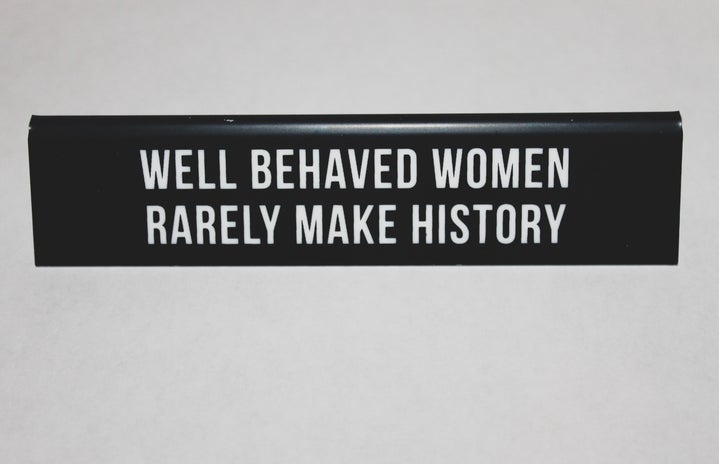As you walk through York, you may see something fluttering in the breeze. A flash of red hangs, curious and strange. It’s a dress, and there are dozens around it. They’re empty, hanging lifelessly from tree branches, buildings, or other hangers. It’s an incredibly bizarre and shocking sight. Where are their owners? Why do they twist in the wind, instead of hugging a warm body? A dress is a dress, after all. They ought to be worn. Why are they here, and not on someone attending a class, going out with friends or simply having a stroll? Red dresses flood the campus from all directions, with dozens and dozens of empty robes.
They each represent a missing Indigenous woman, girl, or two-spirited person. They each represent a missing friend, sibling, parent or child. They each represent a missing human.
The REDress Project was born by Jaime Black, a Metis artist originally from Thunder Bay, but currently based in Winnipeg. Installations of empty red dresses began appearing as early as 2010, immediately garnering national attention. Black chose red, a powerful and historical color for Indigenous persons, to represent “the woman of the red nation, and life blood; the woman’s ability to give life.” Her initial goal was to collect 500 red dresses, but her bold take on activism quickly grew to reach exhibitions from all over Canada. The project draws attention to Missing and Murdered Indigenous Women (MMIW).
Canada has a reputation for racial acceptance, fairness and a progressive attitude, but in fact the government, police and judicial services have always let down POC, especially Indigenous persons. The horrific treatment against Canadian tribes are constantly being swept under the rug, but it is critical that this history is never forgotten. These events are not distant in the past, either. The last residential school, where Indigenous children were taken from parents and adopted to white Christian families, closed only 22 years ago, in 1996.
The oppression of English and French colonialism is further compounded for women and two-spirited persons. Two-spirited people were especially stripped of their culture and identity of having both male and female spirits. The police and judicial system have absolutely and utterly failed them in nearly every way. Over the past 30 years, more than 1,000 Indigenous women, girls and two-spirited persons have either gone missing or have been murdered, many without proper trial or investigation. Many of them are still missing, or their murderers continue to walk either undetected or set free. More missing people are not even properly reported. This number is only an estimate as even the RCMP acknowledges they do not have an exact number.
The frustration and anger from the REDress Project comes largely in part from the lack, either in numbers or in quality, of investigations. Consider Canadian serial killer Robert Pickton, where it is estimated that at least 11 bodies of Indigenous women were found on his farm, and how difficult it was to charge him. It is suggested that some of his victims may have come from the “Highway of Tears,” in which at least five Indigenous women went missing between 1988 and 1995, with either little or no media attention. For the cases that do garner enough attention for an arrest, the trial and judicial system consistently lets down these people, very rarely offering heavy sentences.
For decades, the memory of at least 1,000 Indigenous women, girls, and two-spirited people have existed seemingly only with their loved ones, but with Black’s REDress Project and York’s installation, steps towards a social revolution are underway. This is a fight that must be fought in order to serve justice to them, and it begins with everyone. Remember the next time you see red fabric whipping in the wind: this dress represents an actual human being, and it’s time to take the next step.
All photos courtesy of Kaitlin Kenny



